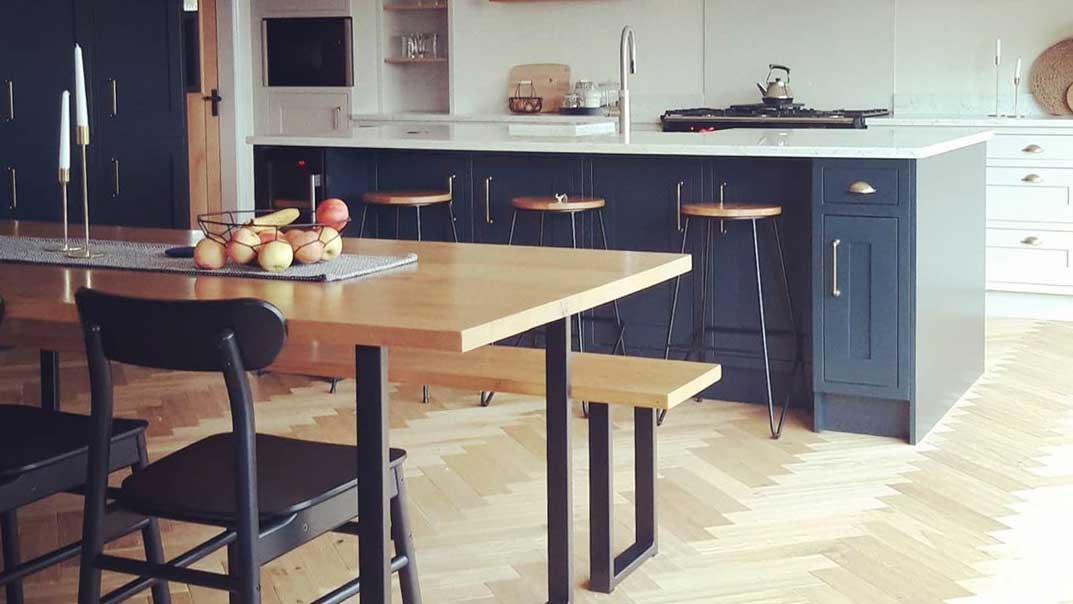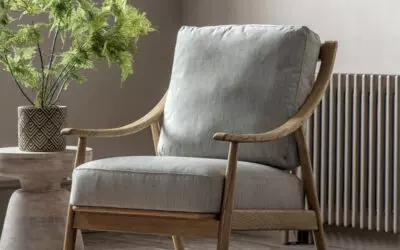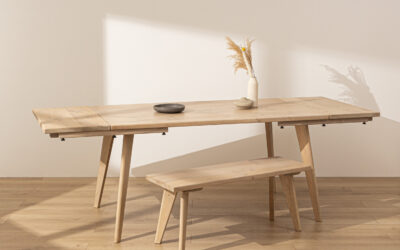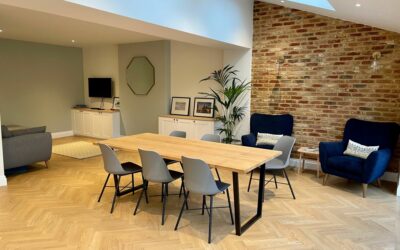The Ultimate Checklist For Furnishing A New Home
Preparing to move into your new home can be an exciting time but equally daunting too. There’s lots of things to consider and think about, from what essentials you need before moving in to decorating and furnishing your home once you’ve settled.
This blog post is also available as Free Downloadable Checklist 👉 “The Ultimate Checklist For Furnishing A New Home“
Contents
Before moving-in day
How to move:
If you’re moving without any furniture, you’ll manage with a car and a couple of friends.
If you have lots of furniture to move in, consider using a removal company to help or hiring a van for a couple of hours, which might be a cheaper alternative.
Have some basic essentials on hand:
Make sure you purchase some basic essentials that might come in handy during the moving process.
- Bin bags – you’ll likely have lots of rubbish to get rid of such as the packaging of any new furniture or furnishings you’ve purchased to move in with. Make sure you have bin bags to get rid of any rubbish straight away
- Basic tools – it’s always handy to have a couple of basic tools, from a screwdriver and spirit level to box cutters and a tape measure, especially if you have flat pack furniture to assemble or shelves to put up
- First aid kit – accidents can happen when moving so make sure you’re prepared with the basics including plasters and painkillers
- Batteries – you’ll be surprised how many household items require batteries so it’s worth stocking up. Most TV remote controls and clocks use batteries in the AAA and AA sizes and you’ll also need 9V batteries for any smoke detectors or carbon monoxide detectors that might need a replacement
- Light bulbs – it’s always good to have a few on hand, just in case something burns out or breaks. There’s nothing worse than trying to unpack your belongings in the dark. Hopefully you’ll know the fitting type before you buy the bulbs
- Toilet paper – it’s often one of those items you forget you need until it’s too late. You’ll need it eventually, so better to grab it sooner rather than later
- Cleaning products – hopefully the last owners will have done a final clean for you but it’s worth having a bottle of disinfectant and cloths to hand just in case you need to give your new home a clean
Some other things to consider:
- Locks – consider replacing your locks when you move in to avoid any issues with old keys, or get a few replacements cut to ensure you have some to spare for emergencies. You can also upgrade your lock to a smart lock
- Security safe – if you have some valuable items that you don’t want to misplace in the move, consider buying or hiring a security safe
- Pack a mini suitcase – depending on what time you move in and how much stuff you have, you might not have to unpack all your belongings in one day. Pack a small bag or suitcase you can easily have to hand a clean set of clothes, pyjamas, underwear and must-have toiletries like your toothbrush, so you don’t have to scramble around in a panic before you go to bed
- Makeshift window covers – you may need to improvise with some makeshift window covers. Unless the previous owners have left you the existing blinds or curtains, consider hanging old bed sheets or even sticking black bin bags over the windows to give you some privacy
Furniture Checklist
Kitchen
The kitchen is usually the largest and most important room in the house. There are a lot of kitchen essentials that need to be purchased for a new house and you don’t want to be caught short.
Eating Essentials
- Plastic plates – buy plastic plates for moving day. If you haven’t managed to unpack or buy any plateware, plastic plates and cups are a great temporary option – even better, there’s no washing up
- Tableware – buy a set of plates and bowls. Plastic plates will suffice for the day you move, but you’ll need something more standard and durable longer term
- Cups, mugs, glasses – make sure you have plenty of mugs and glasses so you can make yourself a cup of tea or glass of water on moving day – you can’t beat a cup of tea after you’ve been unpacking all day.
Shops such as Dunelm, Matalan, Homesense and Ikea have great budget-friendly options for kitchenware. For those with a bigger budget, Habitat, John Lewis and Selfridges have some beautiful options too.
Cooking Essentials
- Bowls – large bowls are ideal for mixing a variety of salads, pasta and rice dishes, as well as serving food on the table.
- Utensils – utensils come in all shapes and sizes, so find what is best for your cooking and baking needs. You’ll likely need a spatula, serving spoon, wooden spoon, potato masher, vegetable peeler, ladle, pasta server, garlic press, whisk and tongs. It may sound like a lot, but you’ll be surprised how often you’ll use all of these.
- Knives – buying a knife block is a great way to ensure you have all the knives you need, and a safe place to store them too. If you can’t afford a knife block, consider purchasing at least one sharp knife to ensure you can chop up food
- Pots and pans – Cutting boards, pots, pans and baking trays are important items. Make sure you have at least a frying pan, a large, medium and small saucepan and a baking sheet. As you get used to your new kitchen and the items you use the most, you can add to your collection
- Tupperware – tupperware is ideal for storing leftover food in the fridge or freezer, without taking up too much room
- Scales/ measuring cups – Measuring cups are also a handy item to have in the kitchen, especially when you’re following a recipe. Incorrectly guessing the ingredient amounts is risky and you could end up ruining a dish you’ve spent hours preparing
- Bottle opener – If you’re having friends round for a celebratory moving-in drink or just want a beer or glass of wine after a hard day of unpacking, having a bottle opener or corkscrew around is a must.
High priority eating and cooking items
- Pots and pans
- Utensils
- Cutlery
- Plates, mugs and glasses
- At least one sharp knife
- Bottle/wine opener
Low priority cooking and eating items
- Measuring cups
- Knife block
Appliances
- Fridge – if you’ve ordered a fridge freezer and there’s a delay in it being delivered to you, buying or borrowing a mini fridge might be a good idea. That way you can store the essentials, like milk, butter and fresh meat, until your larger one arrives.
- Kettle and toaster – unless you want to boil water on the hob to make a cup of tea or use your grill to make toast, a kettle and toaster is pretty important.
- Washing machine – a washing machine is another big purchase which is essential to ensure you can regularly clean your clothes, bedding and towels
- Tumble dryer – if you’re short on space consider getting a washing machine that has a built in tumble dryer or if you’re on a tight budget you can purchase a clothes rack to dry clothes instead
- Dishwasher – a dishwasher may seem like an unnecessary expense, but it makes clearing away after each meal so much easier. If you’re working on a tight budget a dishwasher isn’t an essential, as after all you can always wash dishes by hand
- Microwave – having a microwave in the home is essential for many people and can warm up dishes at the touch of a button
- Vacuum cleaner – if you have carpets a vacuum cleaner is a must and are available to suit a variety of different budgets
- Coffee machine – for coffee lovers, consider a coffee maker or coffee machine.
- Blender – a blender is ideal for those who like to make home-made smoothies or soups
High priority appliances
- Fridge
- Freezer
- Washing machine
- Kettle
- Toaster
- Plates, cups and mugs
Low priority appliances
- Dishwasher
- Tumble dryer
- Coffee machine
- Microwave
Living room
- Sofa – most furniture retailers have a long lead time when it comes to sofas so you may need some temporary seating. Consider buying some cheap camp chairs or bean bags until it arrives. DFS, Sofology, Furniture Village and MADE.com renowned sofa retailers, and Facebook Marketplace is a great place to pick up second hand seating if you’re on a budget
- TV – always check various sites such as Amazon, Curry’s and AO.com for any special offers or deals which should save you some money
- Streaming services – if you’ve purchased a new TV, the chances are it will come with streaming services such as Netflix or Amazon Prime integrated already. If you’ve got an older TV, you can purchase streaming boxes such as Apple TV or Google Chromecast – just double check your TV is compatible first
- Blinds/ Curtains – blinds or curtains are important for privacy, security and temperature control. Fitting the blinds or curtains yourself will save you money too. For curtains remember you’ll need a curtain rod and brackets for blinds
- TV stand – if the TV isn’t fixed to the wall, you may also want a TV stand
- Lighting – floor lamps and table lamps are not only functional but can also add ambience to a room
- Coffee table – it’s not an essential piece of furniture, but another great way to add the finishing touch to your space
High priority living room items
- Sofa
- Blinds or curtains
- TV
- Ceiling light
Low priority living room items
- TV stand
- Coffee table
- Table / floor lamp
- Streaming boxes
Dining Room
- Dining table – the dining room table tends to be a bigger, more considered purchase so you may want to take some time to find one that suits your needs. You can read our dining table buying guide for more information. As a temporary option, invest in some food trays so you can eat off your lap or borrow a table from family or friends
- Chairs – once the table is sorted, dining chairs will need to be purchased. This is so you can see what type of chairs would suit the table, as well as how many you can fit around it. Find out more about what chairs to go for here
- Lamps -a floor lamp is a great way of adding ambience to your dining space, especially if it’s in a separate room to the kitchen. There’s no need to purchase this straight away, as it’s likely you won’t need a lamp until the table and chairs arrive
- Cabinets -Cabinets are a great storage option for dinnerware such as plates and place mats, as well as any items used for special occasions such as china plates or occasion wine and champagne glasses
High priority dining room items
- Dining table
- Dining chairs
Low priority dining room items
- Lamps
- Cabinets
Bedroom
- Bed – a bed might take a while to come so you might have to make do with a mattress on the floor until the bed frame arrives. If you don’t have a mattress consider buying an air bed
- Bedding – pillows, duvets, and bedding are all vital purchases – without these, you’re not likely to have a good night’s sleep
- Wardrobe – it’s best to wait until your bed has arrived so you can see how much space you have left to play with. You can always purchase a temporary rail or fold clothes into drawers instead
- Bedside table – bedside tables are a practical piece of furniture to have in the bedroom. You can keep drinks on the top of the table, whilst many come with drawers to store items such as underwear or clothing
- Lamps – lamps provide additional lighting and can help create a relaxing and calm mood in the room, ideal for when you’re winding down before bed
- Dressing table – if you don’t have a spare room to add a dressing or vanity table, adding this to your bedroom is a good idea
High priority bedroom items
- Bed (mattress and bed frame)
- Pillow, duvet and bedding
Low priority bedroom items
- Wardrobe
- Bedside table
- Lamps
- Dressing table
Bathroom
Depending on how many bathrooms you have, you may need to get these in multiples or for the one bathroom and leave the others to be updated when you have the opportunity.
- Towels – as long as your new place has either a bath or a shower, you’ll need towels. It’s also a good idea to make sure you have your toiletries, such as shampoo and shower gel, for when you move in too.
- Shower screen/curtain – If your new home has a shower, you might need a shower curtain to prevent your new bathroom from getting soaked. Depending on how old your bathroom is, you might also need to purchase new taps and a shower head
- Bathroom essentials – other bathroom items you may want to purchase include a small bin, toilet brush, hand towels, face clothes, smart scale and perhaps even a waterproof shower speaker
HIgh priority bathroom items
- Towels
- Toiletries including hand wash, shower gel, shampoo and conditioner and toothpaste
- Shower curtain (if there isn’t already one there)
Low priority bathroom items
- New taps and showerhead if you want to update the style of your bathroom
- Small bin
- Toilet brush
- Face clothes
- Smart scale
- Waterproof shower speaker
Office
If working from home is a key part of your job, making sure you have the right equipment is vital
- Desk – without a desk you won’t have anywhere to do you work
- Desk chair – make sure you get a comfortable desk chair to suit your desk
- IT equipment – other important working from home items include a laptop or computer, monitor, mouse and keypad
- Stationery – stationery such as notepads and pens are also important especially to take notes
- Filing cabinet – buying a filing cabinet, or a desk with built in drawers, is a great idea to store work items when the office is not in use
- Lighting – if you work late additional lighting such as floor or table lamps is key and helps create a calming atmosphere in your working space
- Bed -with many people now turning their spare bedroom into a home office, you may want to consider purchasing a pull out sofa bed or investing in an air mattress so you have somewhere for overnight guests to sleep
High priority office items
- Desk
- Desk chair
- Laptop/computer
- Keypad, mouse and monitor
- Stationery
Low priority office items
- Filing cabinet
- Lamps
- Pull out sofa bed or air mattress
Smart home & technology
Smart home technology has come a long way in the last few years, with many people opting to have internet connected devices in the home. It can make your life more convenient and give you peace of mind when you’re away from home.
- Internet – one of the first things you’ll want to arrange when you move in, is your internet. It’s worth speaking to a couple of providers prior to your move in date so you have your internet ready to go as soon as you move in. It may take a week or so to get your internet modem and wifi router set-up which is worth bearing in mind, especially if you’re working from home in the new house. You could purchase a dongle to give you access to the internet whilst you’re waiting for it to be set up
- Smart thermostat – a smart thermostat is a great investment and allows you to turn your heating on and off, and change the temperature, all from your phone
- Home security – products such as camera doorbells are worth looking into. Connected to your doorbell, you can see anyone who approaches your house from your phone – even if you’re on holiday
- Speakers – there’s a whole host of interactive speakers you can now purchase, including the popular Echo devices from Amazon. This allows you to play music, set timers and alarms and purchase items direct from Amazon, all with your voice
Miscellaneous must haves
- Step ladder – having a step ladder will certainly come in handy if you’re fixing photos or shelves on the wall
- Ladder -a ladder will also be useful if you’re trying to paint hard to reach areas of the home, such as the hallway and landing
- Plug extension – having a plug extension lead will allow you to use electrical items in other rooms or hard to reach places. When you first move in, you might find that the place you want to put your TV for example, isn’t near a plug socket
- Bulbs – make sure you have spare bulbs for your ceiling lights and lamps
- Tools – having a hammer and measuring tape will help if you need to hang pictures, shelves, or anything else. In fact, purchasing a tool kit which includes the basics such as screwdrivers, measuring tape, hammer, pliers and a saw, is a good place to start when you have DIY to do
- Drill – a drill and selection of screwdrivers will allow for a variety of DIY tasks, such as putting up shelves or larger furniture pieces such as wardrobes
How much should I spend on furniture
There’s no right or wrong answer when it comes to how much you should spend on furniture; it’s all about personal choice and, of course, how much money you actually have to spend.
A good place to start is writing a list of all the money you have left over in any savings after you’ve paid for any moving costs, rent down payments or mortgage down payments including solicitor costs, and see what you have left. You may also get gifts from family and friends when you move, which might include cash gifts or gift vouchers that can be used for furnishing your home.
If savings aren’t an option, write down a list of all the monthly bills you expect to come out of your account, including rent / mortgage, utility bills such as council tax, water, gas and electric, and food bills. Then work out how much you need to live off for the rest of the month, including buying clothes and socialising. This should give you a good idea of how much money you can put towards buying new furniture each month.
Remember, don’t purchase new and expensive items if you can’t afford them, as you can often find cheaper, second hand alternatives that will work as a temporary option.
How can I furnish my new property more cheaply?
There are plenty of ways you can furnish your new property but on a budget.
- Second hand shops – shopping at second-hand furniture shops is a great way to find products but at a lower rate. It may take a few trips until you find what you’re looking for, however, you’re sure to come away with some bargains
- Sales – look for sales in furniture shops, curtain shops, carpet shops and homeware stores. Most retailers have key sales throughout the year, such as summer sales, winter sales and Black Friday discounts which can help you make huge savings
- Budget shops – budget retailers such as Ikea and Jysk are a great option for those on a budget, without compromising on style
- Freebies – ask friends or family for spare items that they don’t need. When you move in it’s worth putting the feelers out to see if anyone you know is getting rid of household items – you never know what someone was just about to get rid of
There’s actually a great guide and some other tips for furnishing your home here
Focus on Quality Over Quantity
As the saying goes, ‘buy well, buy once’, and this is certainly true when it comes to furniture.When you first move into a new home, it can be tempting to go shopping and fill the house with lots of furniture and soft furnishings to make it look homely straight away.
However, asing your furniture purchasing decisions on look, price and the amount you can buy all at once is not necessarily the best approach. This could actually end up costing you more in the long run.
The best thing to do is take some time to familiarise with the space, so you can visualise what furniture would suit your new home. The quality of what you choose to add to your home should be one of your main considerations. Otherwise, you may find yourself regretting your choices or needing to replace them much sooner than your budget allows.
If you’d like to incorporate some Feng Shui into your new home read our guide here.
Other FAQs
What order do you furnish a house?
There are certain basics that any new home needs. The most important items you’ll need when you first move in are a fridge, washing machine, kettle, mattress, bedding, towels, plates, cutlery, mugs and glasses.
How much should I budget for furnishing a new house?
Make sure your budget is realistic and suitable to your personal situation. In reality, very few people get all their new furnishings in one go as it can be very expensive. Working out the priority pieces of furniture you need straight away and budgeting for those is a good place to start. The remaining items can be purchased as you get used to your new space. For a great guide on money saving tips to buy furniture, read this guide here.
Considering A New Dining Table?
Our stunning dining tables are handmade with love here in the UK and come in a wide range of styles; from contemporary to rustic and farmhouse styles. We're certain you'll find one that looks great in your home.
Just give them a view at the very least 🙂








